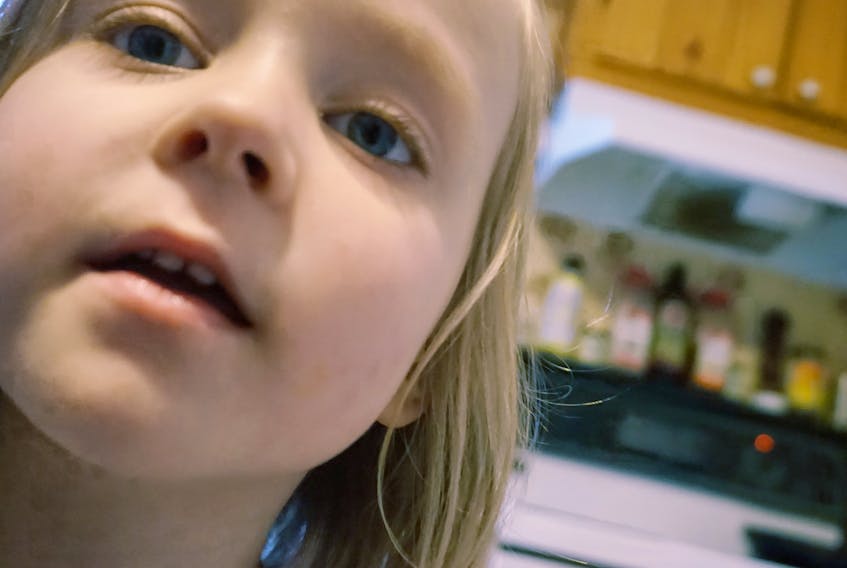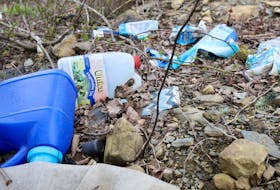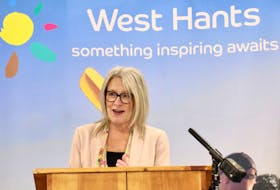LIVERPOOL – Nova Rayne Wamboldt scurries around her living room blowing bubbles, and when she runs out of bubble soap she heads to the sofa where her father, Daniel Wamboldt, sits holding the bubble bottle.
Nova is four years old and will be five in January.
“She’s a very, mostly happy, smart little girl. She loves puzzles, water, bubbles,” said Nova’s mother, Krista Huskins. “She’s a pretty cool little girl, that’s for sure.”
Huskins and Wamboldt are fighting the clock to get their daughter into an Early Intensive Behavioural Intervention (EIBI) program. To be in the program, though, Nova requires an autism diagnosis, and she has to be pre-school aged. Long wait times have Huskins and Wamboldt concerned Nova won’t be able to participate in EIBI.
Questions
It was about six months ago when Huskins and Wamboldt really began to ask questions about Nova’s development. Huskins says her daughter mimics TV shows and songs.
“But she couldn’t communicate using words,” said Huskins.
Huskins says once she and Wamboldt did some research, they realized their daughter had some “obsessive behaviours.” For example, Nova has to take the same route and visit the same stores when out on a walk.
Nova will also, although no longer as frequent, make hand movements close to her face. Also, opening and shutting things is something Nova could do for hours.
“Spinning. She really loves spinning,” added Huskins.
Getting help
Huskins and Wamboldt’s big question in recent months has been what can they do to move the process along.
About a month ago and still no answers, Huskins called anyone she could think of. One of the first things Huskins looked into was a private autism assessment, but she discovered that costs about $3,000 and direct billing isn’t an option.
Then she looked for speech therapy contacts. Once Huskins reached someone, she was referred to the Nova Scotia Early Childhood Development Intervention Services (NSECDIS).
Following an intake interview, Nova was assigned an early interventionist, who will visit every two weeks.

NSECDIS
Denise Lowe Whynot is the regional director for the south shore region of the NSECDIS.
“We work with children birth to school entry who have delays in their development or are considered at risk for delay,” said Lowe Whynot.
Some children who go to the NSECDIS already have diagnoses, which could include autism, cerebral palsy, or Down syndrome. Other times, NSECDIS helps families navigate the diagnosis process. There are also instances in which children never receive diagnoses.
A child who has a diagnosis, is within the age range and lives in the area would automatically be accepted. In the case of no diagnosis, the NSECDIS uses a developmental screening tool.
“A child has to have a delay in two areas or more in order to meet criteria for our services,” Lowe Whynot explained.
The NSECDIS offers four core services, including child development support, which helps families understand where their child’s development is and what comes next. Family support and capacity building involves following a coaching model and helping parents learn how to advocate for and support their child. Case co-ordination includes making referrals to other services, organizing team meetings and supporting the parents in asking for doctor referrals. A fourth core service is transition support.
“We work really closely with child-care centres, pre-primary and then when children transition into school,” said Lowe Whynot.
Waiting game
After the intake interview with NSECDIS, an autism assessment referral went through. That’s when Huskins and Wamboldt learned about the wait list.
“The wait lists are excruciating,” said Huskins. “Right now, we’re looking at about a year.”
Huskins says she also called the IWK for some information about the EIBI program and discovered she could be looking at a year-long wait for that as well.
“Give or take, we’ve got about two years of wait lists ahead of us,” said Huskins.
And there are other challenges. Huskins has had to take time off work, and Nova’s recently gone on a gluten-free diet, which can be expensive.
“Right now I am struggling to pay my bills,” said Huskins.
Huskins and Wamboldt agree, however, there is good news. Nova has begun to show interest in using sounds to communicate.
“I just wish that there was more staffing,” said Wamboldt.
There are services, but they’re understaffed, he said. Huskins adds the process of navigating what to do and where to go was confusing.
“The only reason we got this far is because we collectively have just dived into this 100 per cent,” she said.
At this point, Wamboldt says he’s decided he will have to home-school his daughter because he doesn’t want her to be two years older than her classmates.
Forty-five minutes later, Nova’s bubble tube is empty.
“They’re all gone. Can we put this away? All done,” says Wamboldt.
Nova follows her father to the kitchen where she sits on a tricycle and completes the next task of choosing pizza for lunch.










